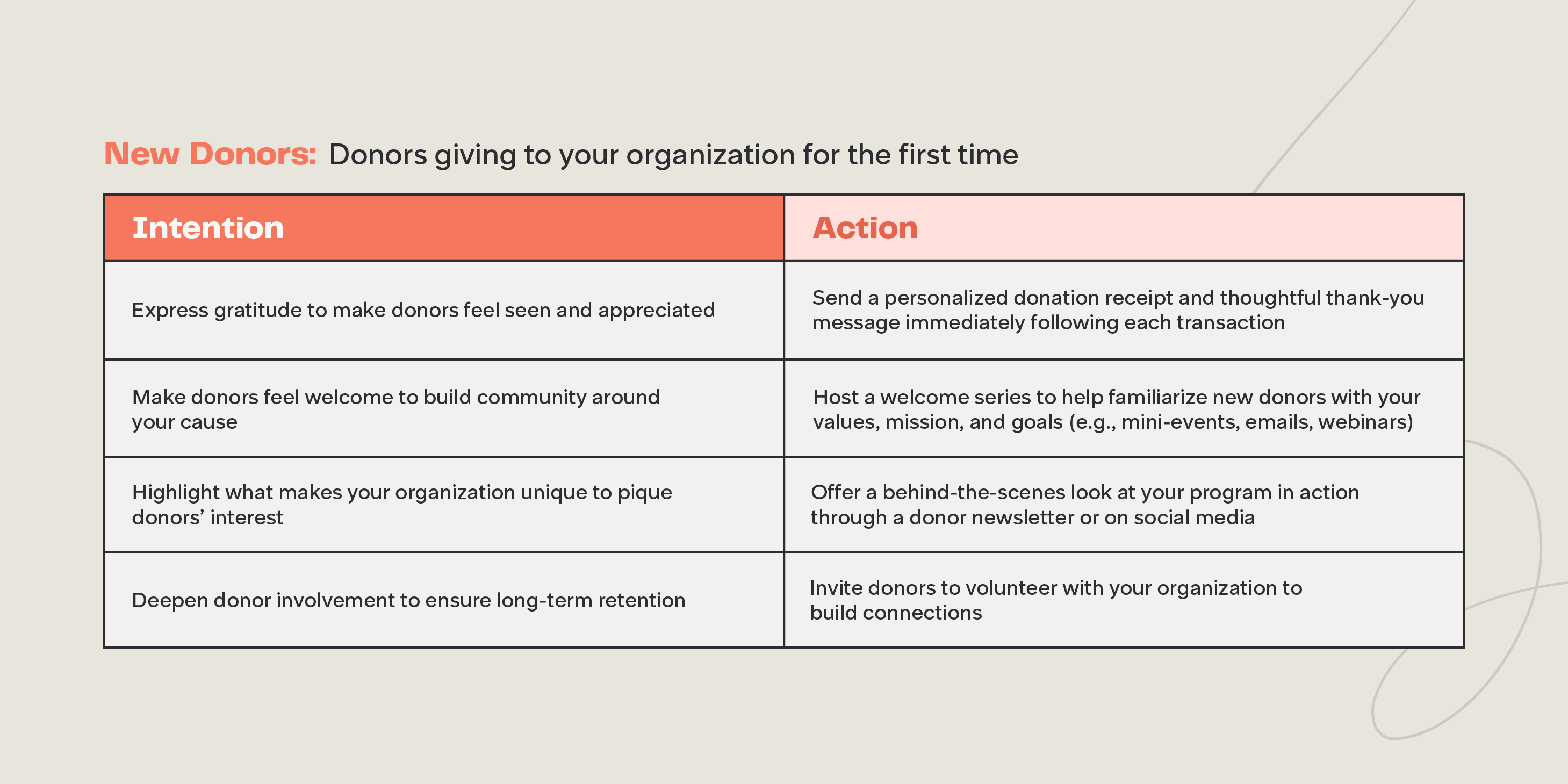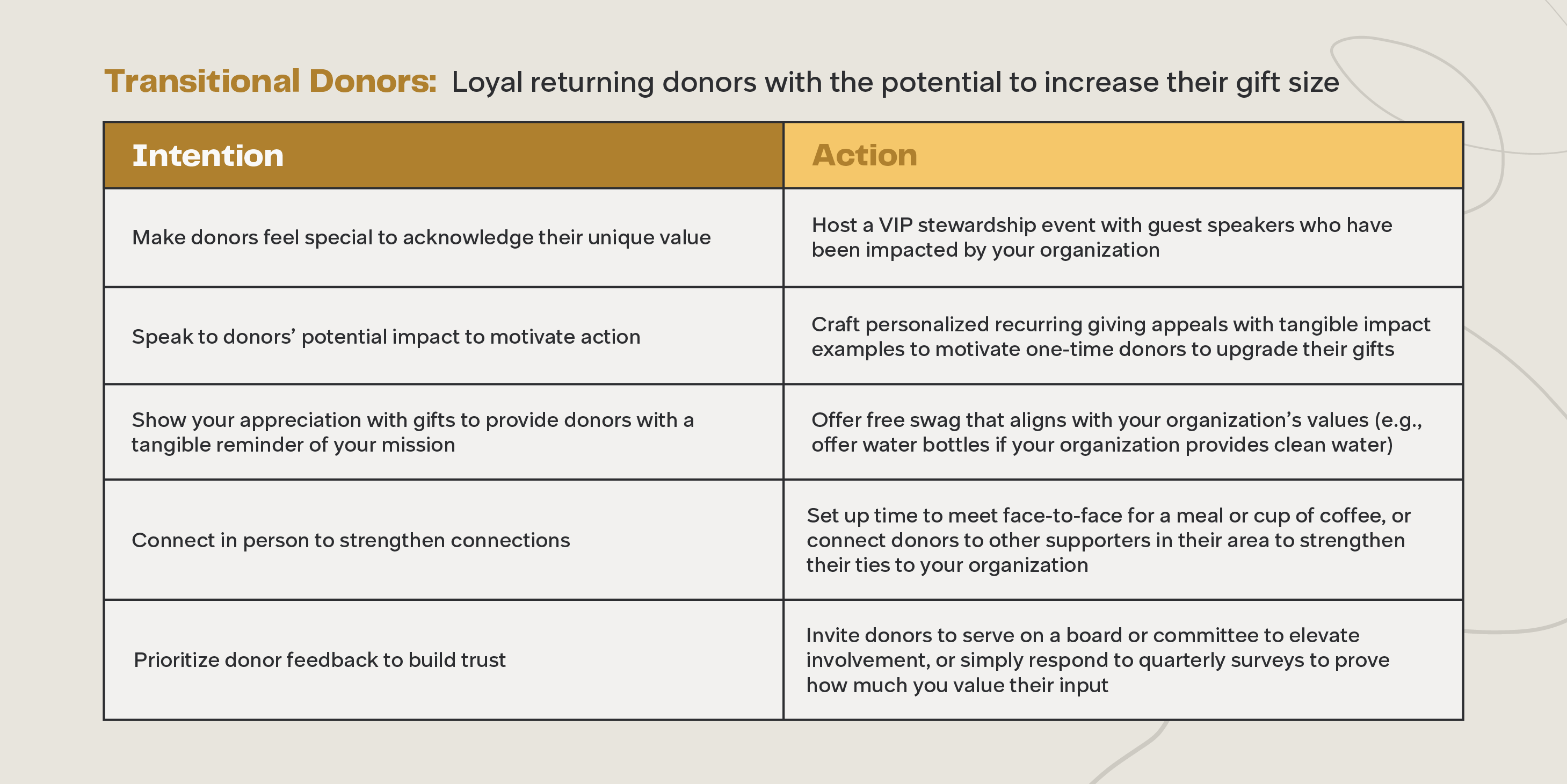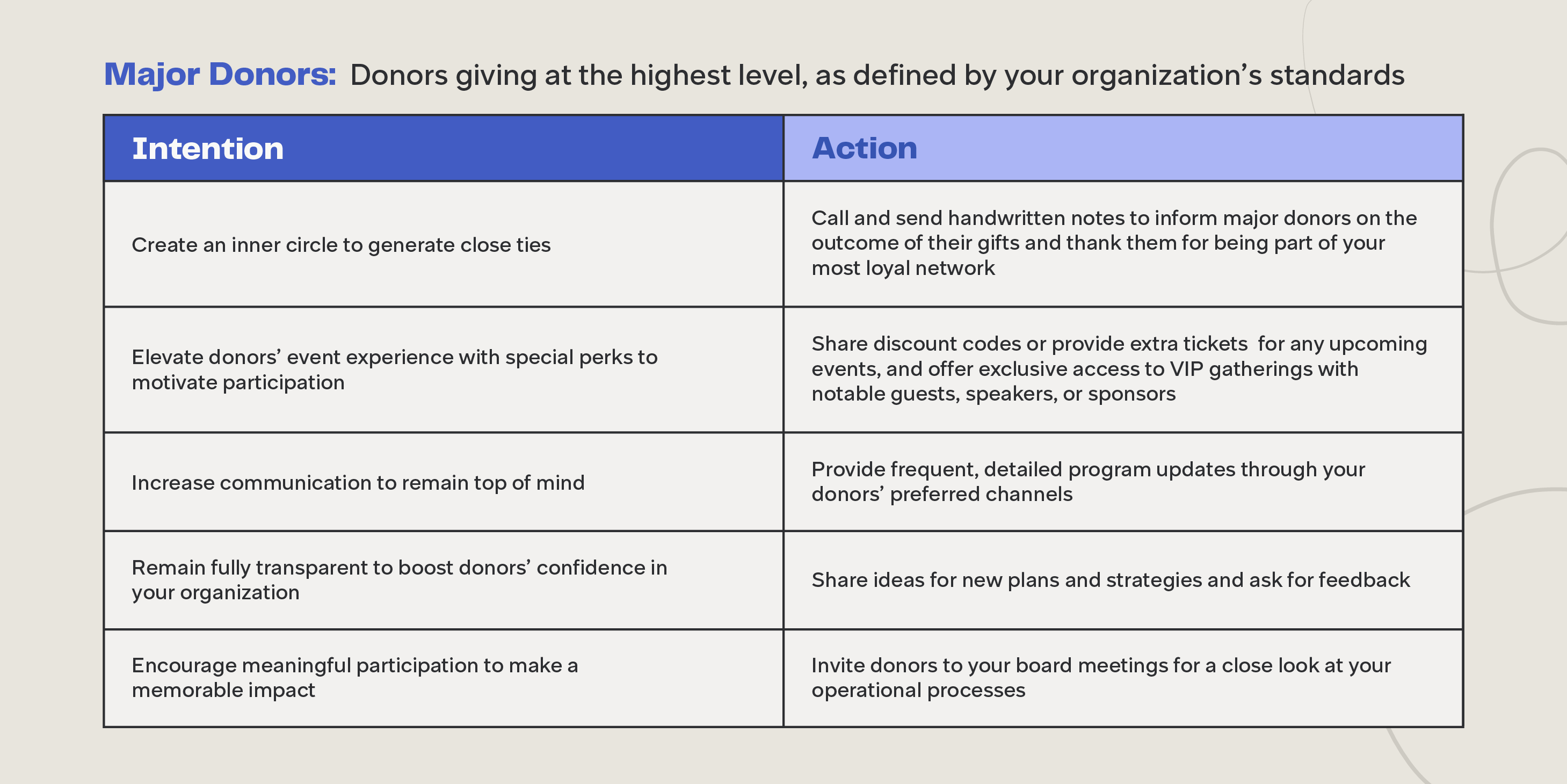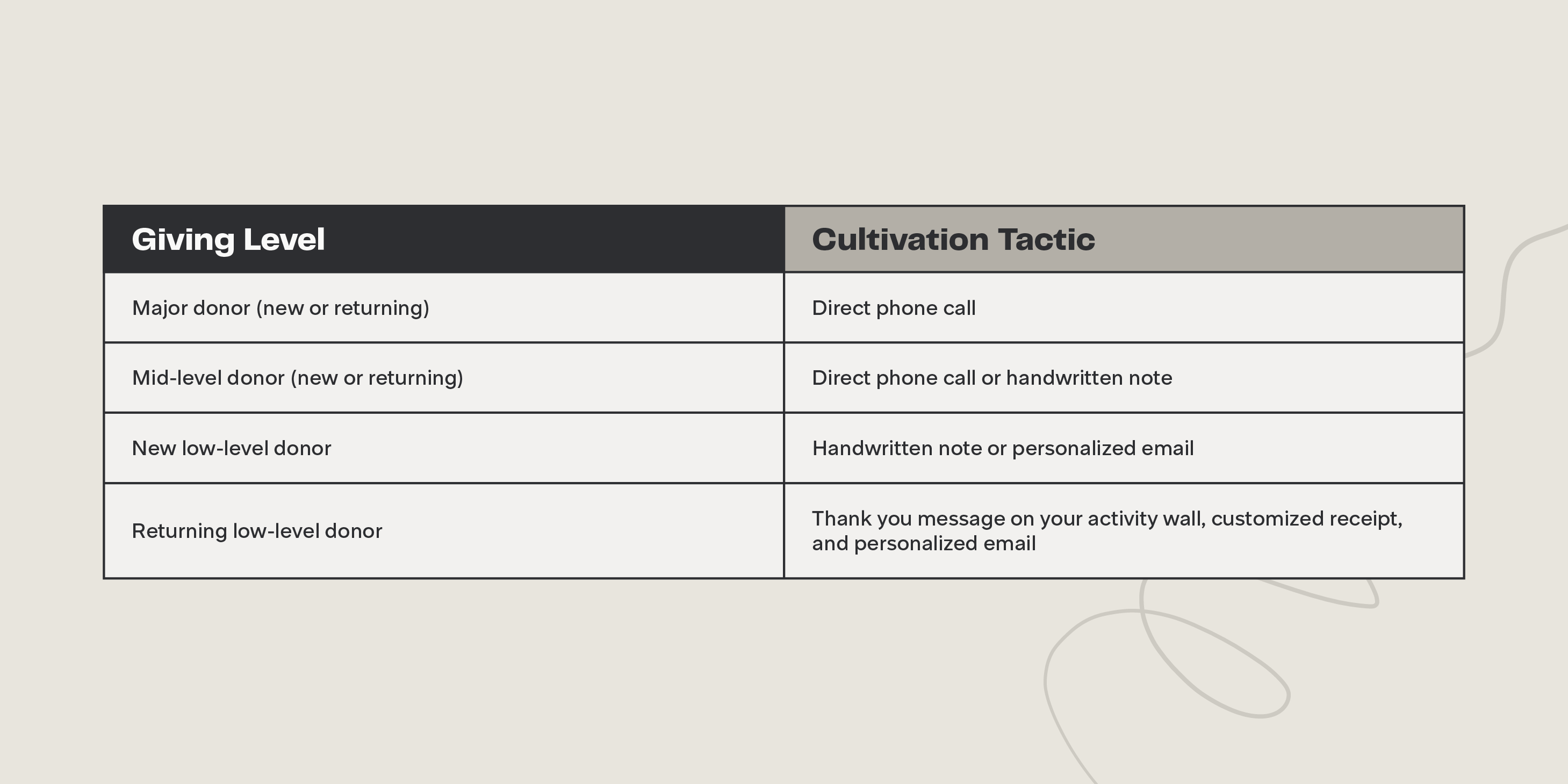Donor Stewardship: Your 5-Step Plan to Retain Lifetime Supporters

Request a Demo
Learn how top nonprofits use Classy to power their fundraising.
The simplest, most cost-effective strategy to ensure the long-term financial health of your nonprofit organization is prioritizing donor retention. Establish meaningful relationships with your supporters and set your team up for larger donations in the future with a cohesive donor stewardship plan.
Below we outline five simple steps to elevate your donor stewardship strategy and offer tangible tips on ways to master impactful interactions that resonate with your audience.
What Is Donor Stewardship?
Donor stewardship is the process of progressively building deeper donor relationships. To do that effectively, your nonprofit organization needs a plan to thank, communicate, and interact with each individual to solidify their loyalty over time.
Stewarding donors can help up-level your retention potential by increasing the lifetime value of each supporter. When you invest in donors who are investing in your organization, you’re showing your appreciation in the most meaningful way. That human connection is what keeps your community engaged and excited to return.
When you execute a donor stewardship plan strategically, the natural results of those efforts increase your donors’ sense of belonging to your cause. That ultimately strengthens their connection to your mission and reaffirms their desire to support your initiatives.
5-Step Stewardship Plan to Secure Fundraising Through the Donor Journey
Step 1: Segment your donors to define your communication strategy
The key to effective stewardship is knowing who you’re talking to. Top brands often perform audience segmentation to ensure each marketing message resonates with their consumers. Your nonprofit can follow their lead. Define donor categories to tailor your communication strategy and initiate more thoughtful conversations effectively.
Every donor has a special connection to your mission. When it comes to fueling your donor retention rate, understanding that connection is essential. Start by breaking your donor list into categories like:
- First-time donors
- Recurring donors
- Giving levels (low-level, mid-level, or major donors)
- Donation frequency
- Seasonality of giving
- Donors from specific acquisition channels
While these segments may seem high-level, knowing how often a donor is engaging with your cause and how much they’re contributing to your efforts is a strong indicator of how connected they feel to your mission.
Step 2: Identify what motivates your donors to give
Once you’ve completed the donor segmentation process, dive deeper into each list to identify areas of fundraising opportunity. Start by asking yourself some reflective questions, like:
- How do our donors connect our organization with the cause they care about?
- What event, conversation, or donation appeal motivated these new donors to give?
- How many low-level and mid-level donors have the potential to become major donors?
- What holidays or special events do our donors feel most inspired by?
- How many donors are we acquiring through each platform?
Conduct an email survey or prompt donors to answer a few quick questions after they submit an online donation as a simple way to gain additional insight. If your team has the resources to connect with supporters in person or through tailored outreach, take advantage of the opportunity to hear about their experience first-hand.
Ask questions like:
- How did you hear about our nonprofit?
- Is there a personal connection you have to the cause we support?
- Which of our programs do you feel most passionate about?
- How often would you like to receive updates from our team?
- Have you donated to other organizations in the past? If so, what was your experience like?
From there, create your strategy based on which phase of the donor journey each individual is currently in. Set intentional time for meaningful exchanges outside of thank-you messages and donation appeals. Showing each donor that you’re interested in who they are as an individual makes them feel seen and appreciated.
Additionally, the information you gain from each conversation can provide a small window into your donors’ values, beliefs, and personality traits. Here’s a quick list of ways to nurture new, transitional, and major donors:



Step 3: Demonstrate and celebrate donors’ impact
Classy’s Why America Gives report states the top reason donors reconsider giving is that they do not clearly understand the impact of their gifts. Shine a spotlight on the solutions your loyal supporters have made possible. That way, your prospective and loyal donors know just how much of a difference their generosity makes.
Highlight donors in your newsletter, social media posts, on your website, or even on a banner at your next fundraising event. Be sure to check with donors first to gauge whether or not they’re comfortable with public recognition.
Provide tangible examples of how each dollar was spent. Include numbers, statistics, quotes, and visuals to communicate your gratitude. You can do this in the form of:
- Annual reports. Send a quarterly, bi-annual, or annual report that details the impact of your program. Gain inspiration from other nonprofits and access best practices for creating your report in our article, Your Nonprofit Annual Report: 10 Things to Include This Year.
- Personalized touchpoints. Show donors that you’re thinking about them and appreciate their involvement through email, letters, or phone calls. Download our 13 Donor Retention Email Templates to get started.
- Timely updates. Send relevant updates outside of your planned communication strategy to keep donors in the loop at all times in a more organic way.
Step 4: Introduce donors to your extended network
Cultivate a close-knit community to deepen donors’ connection to your nonprofit network. The more friendships your donors establish with fellow supporters, the more likely they will come back month after month.
Foster a sense of togetherness through online groups, in-person and hybrid events, or volunteer opportunities. Encouraging individual donor meetups or coffee dates is another great way to boost camaraderie.
Since it’s likely some donors won’t have time in their day for a scheduled meetup, a pen pal or mentorship program can serve as an alternative solution. Match major donors with new or transitional donors for an opportunity to exchange thoughts, goals, and intentions on a cadence of their choice.
Step 5: Thank new and returning donors with timely outreach
An immediate, genuine expression of thanks can be the difference between securing a lifelong supporter or losing a donor after just one gift.
On Classy, you can send personal thank-you messages in real time on your activity wall. This small, yet meaningful interaction can spark positive feelings for your donor and motivate them to give again in the future.
Once your first exchange is complete, it’s important to strategize which donor cultivation tactics make the most sense for new donors versus returning donors. How will you make a lasting impression when a supporter gives an online donation for the first time? If a particular donor has already given a handful of times before, how will you nurture that existing relationship to retain and potentially uplevel their gift size?
Giving levels are a good place to start when determining how many resources to dedicate to each individual donor. Here are a few suggestions:

Make each interaction both sincere and personal. Greeting each person by their preferred name and title and extending outreach through their preferred channel is a great way to show that you care.
Update your donor data regularly to reflect all new donor updates and report on recent conversations. Keeping real-time tabs on where each individual sits within the donor journey is a critical piece in building relationships that last.
Donor Stewardship Takeaways
There is no one-size-fits-all approach to crafting an effective donor stewardship program. Think about how you would like to be highlighted and nurtured as a donor if the roles were reversed. Although it can seem overwhelming to craft the perfect message, it should be as simple as treating others how you’d like to be treated.
Be intentional about each opportunity to strengthen donor relations, whether that’s in January, at year-end, or any season in between. Remain involved with donors through planned and unplanned communications to stay top of mind, like an annual report or quick coffee date, and remember that you know your donors best.
For email inspiration to keep your donors coming back again and again, download our 13 Donor Retention Email Templates.
Posted in Fundraising

13 Donor Retention Email Templates
Subscribe to the Classy Blog
Get the latest fundraising tips, trends, and ideas in your inbox.
Thank you for subscribing
You signed up for emails from Classy
Request a Demo
Learn how top nonprofits use Classy to power their fundraising.
 Explore Classy.org
Explore Classy.org 

